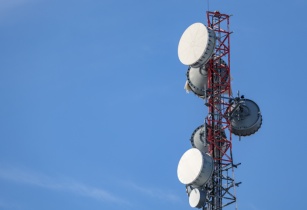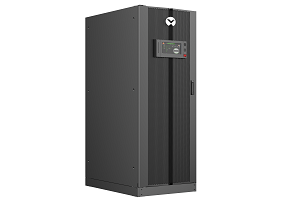Page 2 of 4
A new approach to mobile backhaul infrastructure
Cell sites are getting increasingly complex as operators rapidly adopt 3G technologies such as High Speed Packet Access (HSPA) and Evolution Data Optimized (EVDO) and are already looking ahead to 4G technologies. Even as they migrate to these next-generation services and architectures, operators realize that the new 4G technologies (IP/Ethernet) and emerging 3G (ATM) services will need to coexist with existing legacy 2G (TDM) for quite some time. Operators and transport providers must maximize their investment in infrastructure and are always reluctant to take out and replace existing technology. In addition, voice and text are still the dominant revenue generators, and it is hard to justify the expense and disruption of moving subscribers to new handsets.
The mobile backhaul market is clearly expanding. The mobile backhaul equipment market grew 10.3 per cent in 2010 over the previous year, to $6.84bn worldwide. Cost is a dominant factor in the design of the next-generation backhaul infrastructure. Many mobile carriers spend as much as 30 percent of their operating budgets on backhaul. The addition of almost 1.5bn mobile subscribers and 1.6bn mobile broadband subscribers between 2011 and 2015 will require more base stations, more cell site connections, higher backhaul capacities, and equipment for each cell site connection. (Source: Infonetics, 2010)
As traffic for high-bandwidth data services continues to grow, this cost will increase exponentially. Operators must find a way to reduce the cost of mobile backhaul. A vast majority of US mobile operators have used leased T1/E1 lines in their mobile backhaul networks. In Western Europe and the greater part of Asia/pacific, microwave (Time-division Multiplexing [TDM] encapsulations) based backhaul are widely deployed. Although TDM is known for its high reliability, this legacy approach is expensive and does not scale easily, since the carrier must add an additional full T1/E1 line when existing capacity is exceeded.
Clearly mobile operators need a new approach to cost-effectively scale their mobile backhaul networks, and so many of them are shifting to Ethernet based connectivity at cell sites This new approach, in addition to being highly scalable and reliable, must bridge the gap between legacy and next-generation networks and services—providing the flexibility to support both.
Broadband Forum’s initiative for next-generation mobile backhaul network
The Broadband Forum, a global standards organization focused on end-to-end IP network optimization, is tackling these backhaul challenges via its MPLS in Mobile Backhaul Initiative (MMBI). The initiative proposes a framework for the use of IP/Multiprotocol Label Switching (MPLS) technology to transport Radio Access Network (RAN) backhaul traffic over access, aggregation and core networks. It describes possible deployment scenarios and provides recommendations on how to deploy MPLS in each of these scenarios to design flexible, scalable and economical backhaul network.
The Forum has already published the MMBI Framework and Requirements technical specification and currently Forum’s members are working together for defining standards based, interoperable architecture framework for 1) 2G and 3G networks and 2) LTE networks.
The MMBI architecture allows operators to leverage their existing last mile access technology of their choice, such as TDM, Point to point microwave links, DSL, Satellite etc. It is flexible and offers various options that enable them to deploy MPLS as close to cell site (for example, all the way to cell site or to hub location), as it fits in their architecture. Satellite is an expensive technology, but essential and important (such as Africa and remote parts of India) where fiber or copper is not available and sometimes distances exceed economical business logic.
The mobile networking industry is recognizing an increasing role for IP/MPLS as the best strategic solution for backhaul. IP/MPLS offers the combination of cost, scalability and flexibility that mobile operators need to leverage existing investments while building out capacity for the burgeoning data traffic. IP/MPLS supports features such as:
Co-existence of TDM (2G), ATM (3G) and IP/Ethernet (4G) transport
Strong ATM-like Quality of Service (QoS) and Traffic engineering techniques
Rapid service restoration after failure detection by leveraging tools such as Fast-reroute, Operation Administration and Maintenance (OAM) etc.
Future-proof investment for migrating from 3G to all-IP based 4G/LTE



































